- Author Jason Gerald [email protected].
- Public 2023-12-16 10:50.
- Last modified 2025-01-23 12:04.
Response papers require the author to analyze the text, and then develop comments related to the text. This is a popular academic assignment because it requires reading, research, and writing that involve deep thinking. You can learn how to write a response paper by following these writing tips.
Step
Part 1 of 3: Prewriting and Active Reading

Step 1. Understand the purpose of the response paper
Response papers are used as assignments so that after reading a text, you can think about your feelings or thoughts about the text well. When you write a response paper, you should evaluate the strengths and weaknesses of the text, along with your opinion on whether the text was successful or not and how well it achieved its objectives. Response papers are not just papers in which you share your opinion. These papers require careful and thorough reading of the text to understand the implied meaning. You should respond to implied ideas, and elaborate, evaluate, and analyze the author's purpose and main points. In many cases, you can use the first person “me” point of view when writing a response paper.
- When you respond to the text, support your ideas with evidence from the text and the relationship between the idea, the text, and your overall concept. If you are asked to agree or disagree, you must provide convincing evidence of why you agree or disagree.
- If you are responding to multiple texts, you should analyze the relationships between them. If you are responding to a single text, you may have to relate that text to the overall concepts and themes you discussed in class.
- The same assignments may also be given for films, lectures, field trips, experiments or laboratories, or even class discussions.
- Response papers are not text summaries. The paper also does not state, “I liked this book because it was interesting” or “I hated this because it was boring”.
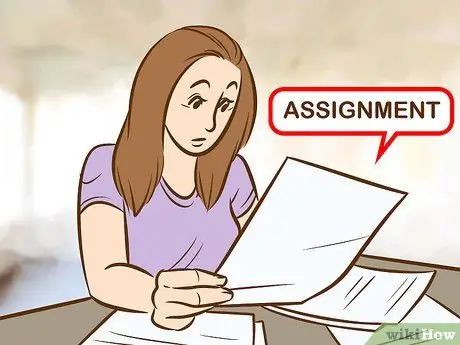
Step 2. Find out the response requested in the task
Before starting your paper, you should find out what response your teacher or professor is expecting. Some teachers want you to respond by analyzing or evaluating the reading. Other teachers want personal feedback. Make sure you understand what kind of response is being asked for in the assignment.
- If you are unsure, ask the teacher to clarify the response they expect from the assignment.
- You may be asked to respond to texts based on other texts. If a response like this is requested, you need to use quotes from both texts in your writing.
- You may be asked to respond to texts based on the themes in class. For example, if you're reading a book in Sociology class about gender roles, you'll want to read, annotate, and respond based on the gender roles described in the book.
- You may be asked to respond to texts privately. This is rare, but sometimes the teacher just wants to know if you've read the text and thought about it. If this kind of response is requested, you should focus on what you think of the book.

Step 3. Read your assigned text as soon as it is assigned
To complete a response paper, you don't just read, give your opinion, and submit papers. Response papers put together texts, which means you take the information you read and put it together so you can analyze and evaluate it. You should take the time to read, but more importantly, you should take the time to understand the text you are reading so that you can combine ideas.
- One of the biggest mistakes students make is waiting until the last minute to read and respond. Responses are thoughtful consideration after reading and rereading several times.
- You may have to reread the text several times. First, to read and familiarize yourself with the text, then read to start thinking about your assignment and responses.
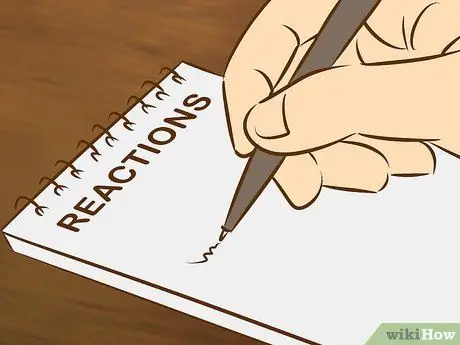
Step 4. Write down your initial response
After you read the first time, write down your initial responses to the text. Do the same for the next reading.
Try completing the following sentences after you read: I think…, I see that…, I think…, I think…, or I think…

Step 5. Write notes or annotations on the text as you read
As you reread the text, annotate it. Annotating in the margins of the text allows you to easily track the location of quotes, plot lines, character development, or responses to text. If you fail to write annotations carefully, it will be more difficult to write a coherent response paper.
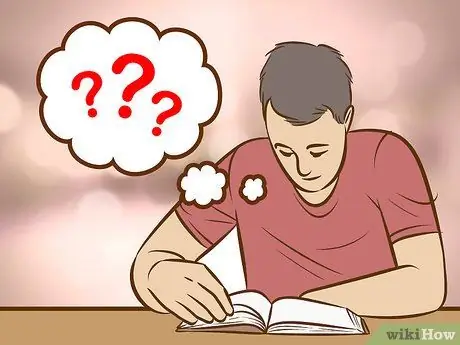
Step 6. Ask questions as you read
As you read the text, you should start asking questions about the text. This is where the evaluation of your materials and feedback begins. Some questions to consider include:
- What issues or problems did the author address?
- What is the author's main point?
- What points or assumptions does the author make, and how can the author support them?
- What are the advantages and disadvantages? Where is the problem with the argument?
- How do the texts relate to each other? (if there is some text)
- How do these ideas relate to the overall idea of a class/unit/etc?
Part 2 of 3: Drafting Your Essay
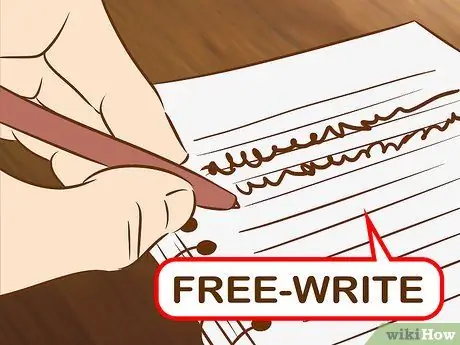
Step 1. Write freely
Start by free-writing your feedback and evaluation of the author's ideas. Try to write down what the author wants you to say, and if you agree or disagree with those ideas. Then, ask yourself why, and explain why you think so. Free writing is a great way to get your ideas down on paper and overcome the inability to write at the start.
When you're done, reread what you've written down. Determine your most powerful and convincing response. Prioritize your points
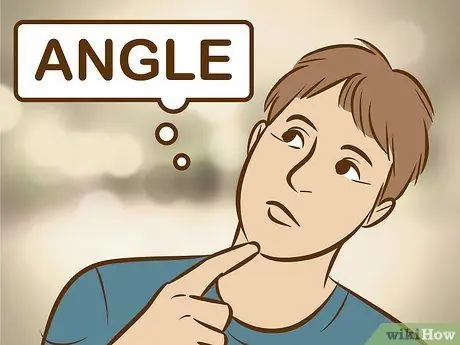
Step 2. Determine your point of view
The response paper should be critical and contain a text evaluation. Otherwise, you are simply summarizing the text you have read. After freewriting, determine your point of view. Keep asking yourself the same questions as you work out a coherent response.
Think about why the author wrote the article or story that way. Why did the author arrange everything this way? What does that have to do with the outside world?
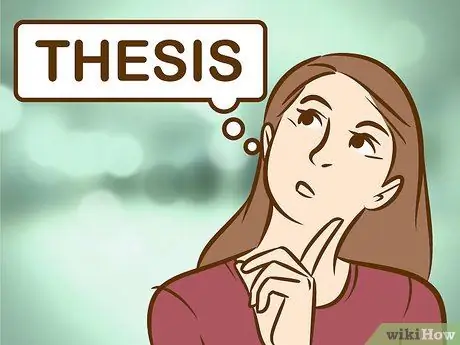
Step 3. Define your thesis
Now that you've finished your freewriting and found your point of view, you can structure it into an argument. What interesting thing would you like to say about the text you just read? Begin to state why you find it interesting and important. This is the essence of your response paper. Gather all the points, opinions, and observations and combine them into one claim that you will prove. This is your thesis.
Your thesis will be a single statement explaining what you are analyzing, criticizing, or trying to prove about the text. The thesis will force your response paper to stay focused
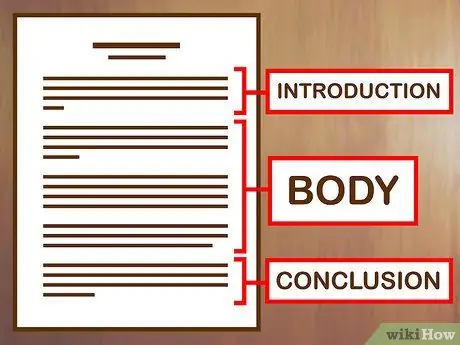
Step 4. Compose your paper
Your paper should follow a basic essay format. A paper needs an introduction, a body paragraph, and a conclusion. Each body paragraph should directly support your thesis. In the body of each paragraph, you must respond to a different part of the text. Organize your responses into general topics, so you can write them in paragraphs.
For example, if you are responding to a theme in a book, you could divide the paragraph into the ways in which setting, antagonist, and figure of speech convey the theme successfully or unsuccessfully
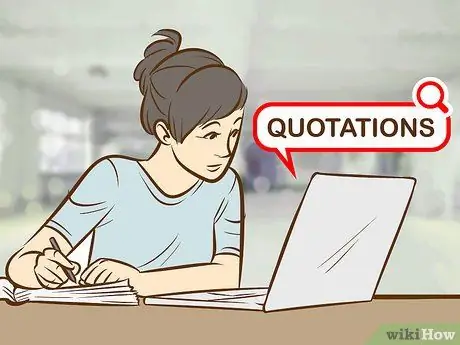
Step 5. Collect quotes
Once you have organized your ideas into paragraphs, you should look for quotations that will support your points. You must support your claim with evidence from the text. Look at your annotations for citations to support your thesis.
Draft paragraphs outlining the quotations, analyzing, and commenting on the quotations

Step 6. Compose your paragraphs
Your paragraphs should start with a topic sentence. Then, you must decide how to structure your paragraphs. You can start by writing down the author's words and follow it up with your responses. You can also start by writing down the author's response, followed by the difference in your responses. In general, you want to start with what the author said first and follow that with your feedback.
Good steps to think about the structure of your paragraphs are: details, examples/quotes, comments/evaluations, repeat
Part 3 of 3: Writing Your Final Draft
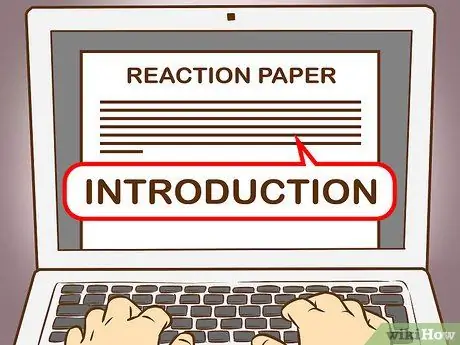
Step 1. Write your introduction
Make sure your introductory paragraph states the name of the text, the author, and the focus of your paper. You may also want to include the year of publication and the publication of the source, if relevant. It's also good to include the topic of the text and the author's purpose.
The last sentence of your introduction should be your thesis
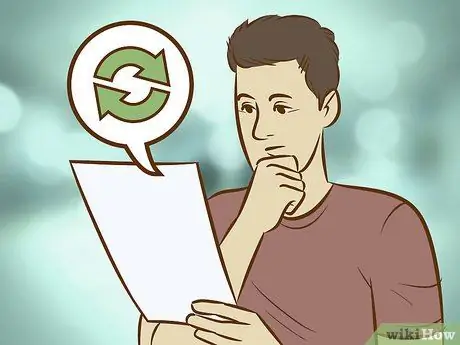
Step 2. Reread your response paragraph to make sure you are giving a stand
While most response papers don't ask for your specific personal opinion, you should critique, analyze, and evaluate the text, not just provide facts.
Look for sections that contain only reports of the content of the text without criticism or evaluation of the content of the text
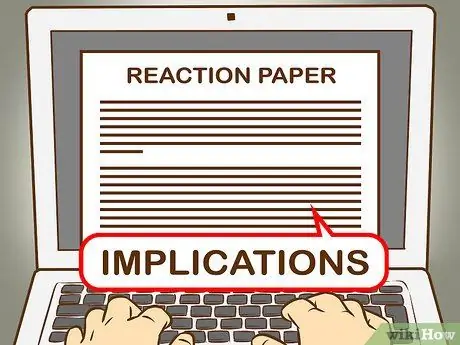
Step 3. Explain the larger implications of the text for the class, authors, readers, or yourself
One good way to analyze and evaluate text is to relate it to other ideas that you have discussed in class. How does this text compare to other texts, authors, themes, or time periods?
If you are asked to provide a statement of your personal opinion, the conclusion is probably the best place to include it. Some teachers may allow you to express your personal opinion in the body of the paragraph. Make sure you double check with your teacher first if your teacher allows it
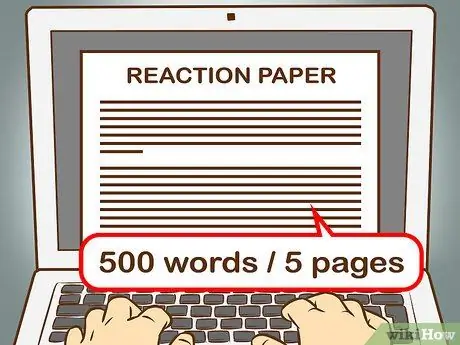
Step 4. Make edits to check the clarity and length of the paper
Since response papers are usually short, you don't want to write a long paper. Papers range from 500 words to 5 pages. Make sure you read your assignment carefully to make sure you've followed the instructions.
Read it again to check for clarity. Are your sentences clear? Have you fully supported and argued your points? Is there a part that confuses you?
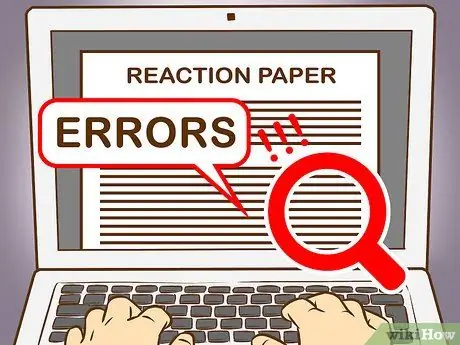
Step 5. Check the language and spelling of your document
Check by reading for grammatical errors. Look for sentences that are too long and contain two different ideas (run on sentences), sentence fragments, verb problems, and punctuation errors. Also check the spelling.

Step 6. Ask yourself if you have responded well to the assignment
Check your task guide again. Make sure that you have followed your teacher's instructions. If so, the paper is ready to be submitted.
Tips
- Look for things the author forgot or provide counter arguments when the author's argument is weak.
- Don't wait too long to write a paper after reading the text. You don't want to forget important details.
- This paper is not an autobiography. This paper is not about how you feel, what you did in the same situation, or how it relates to your life.






